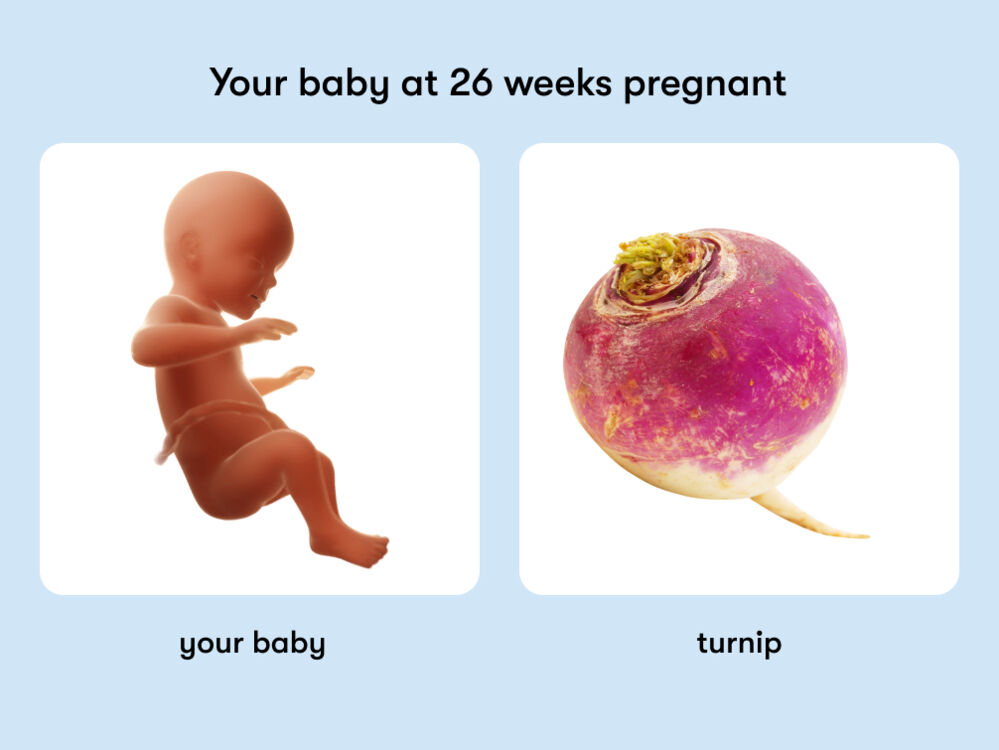At 26 weeks pregnant, you’re probably very curious about what’s going on inside your growing baby bump. Read on to find out why it’s an important week for your baby’s eyes and lungs, plus tips from a Flo expert on how you might be feeling as your pregnancy hormones change and your baby continues to grow.
Your baby at 26 weeks pregnant
Your baby’s lungs have formed
This week, your baby’s lungs have started producing the substance that will later allow the air sacs in the lungs to inflate. Called surfactant, this substance will prevent the air sacs from collapsing and sticking together when the lungs deflate.
By 36 weeks of pregnancy, your baby will be fully ready to take their first breath after they are born. So while your baby’s little lungs have still got some developing to do, it can be lovely to think that they are one step closer to being able to take their first breath after birth.
Your baby can open their eyes
This week, your baby is also able to open their eyelids, and soon they will learn how to blink. It’s a big week for their eyes, as they are also starting to produce melanin — the substance that gives their eyes and skin their color. You may have heard that all babies are born with blue eyes, but this is a myth.
However, it is true that a baby’s eye color can keep changing for a while after birth. While their permanent color sometimes doesn’t settle until they reach adulthood, this will usually happen by the time they’re three years old. The color of your baby’s eyes is based on their parents’ genetics, so there’s a good chance they’ll end up with the same color eyes as you or your partner!
How big is a baby at 26 weeks?
Length (crown to heel): 35.1 cm or 13.8 in.
Weight: 913 g or 2 lb.
Size: Equivalent to a turnip
All measurements are approximate and vary within the normal range.



